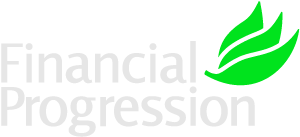The hidden complexities of Nordic fees
At Financial Progression, we’ve audited media activity in more than 40 countries worldwide, giving us an informed perspective on the different complexities that shape those markets. One such complexity is the concept of payments from publishers / digital platforms to media agencies in the Nordic markets of Denmark, Norway and Sweden.
Despite their prevalence, many advertisers don’t fully understand Nordic payments – even though they can amount to as much as 6% of media cost.
In this article, we’ll look at the different types of Nordic payments, explain how they can be re-defined to appear as agency fees and help to make these transactions more transparent – building trust and understanding between you and your media agency.
Types of Nordic Payments
Nordic Payments typically fall into four categories:
- Agency Compensation
Also known as Advertiser Compensation, this is a discount from media owners to reflect the media agency’s compliance with co-operation protocols, thereby streamlining the media owner’s administrative work. - Information Compensation
A discount for the agency’s role in keeping client information up-to-date and for using certified tools and online booking systems to make media buying more efficient. - Payment Compensation
Also known as Handling Compensation, this is a discount given by the media owner to recognise that client funds pass through the hands of the agency before arriving at the media owner. - Deposit Compensation
Also known as Credit Risk Compensation, this is a discount to offset credit risk. Media owners will require agencies to hold a fixed amount in a ring-fenced account as a security deposit. It is especially common in Norway.
These payments manifest themselves as discounts on media owners’ invoices to agencies as a reduction in the media cost. They are often grouped together as a total amount, rather than being itemised separately on the face of the invoice. They’re calculated as a percentage of media spend and rates will vary by media owner and channel. The rates are normally agreed in contracts between media owners and media agencies.
Media Discounts or Agency Fees?
Given the above, how would you expect Nordic payments to be defined in a contract between an advertiser and a media agency?
Historically, they’ve been defined as discounts. After all, they are given by the media owner and reduce the amount of the net media cost to the agency and onwards to the advertiser. In media agency contracts, ‘discounts’ are almost always amounts that are to be passed on to the client in full. This means that normally the agency does not derive any benefit from ‘discounts’ provided by media owners.
In recent years, however, some media agencies have started to look beyond what’s on a media owner’s invoices and are taking the position that these amounts are actually received in return for the agency providing a service to the media owner. When looked at through this lens, they are redefining them as a ‘fee’ charged by the agency to the media owner in return for services provided. In media agency contracts, ‘agency fees’ are almost always amounts that are to be retained by the agency as part of its remuneration.
In summary, if Nordic payments are defined in a media agency contract as a ‘discount’, the advertiser will receive the benefit of them in full. Conversely, if they are defined as an ‘agency fee’, the agency will receive the benefit.
What is the Position of Trade Bodies?
In September 2022, Sveriges Annonsörer, the body that represents Swedish advertisers, and Sveriges Mediebyråer, the body that represents Swedish media agencies, updated their recommendations for co-operation between advertisers and media agencies (it is also known as the ‘consensus document’).
In the press release announcing the revised recommendations, it said (translated into English by software), “All payments from publishers and/or technical platforms to media agencies, regardless of what they are called (advertiser/media agency compensation, handling compensation, credit risk compensation, information compensation, cash discounts, commissions, AVBs, etc.), must always be reported to the advertiser with full transparency for all advertising purchases made.”
Hence there is consensus in Sweden that such payments / compensation must always be reported to the advertiser with full transparency. It does not, however, offer a perspective on whether the advertiser or the agency should benefit from them.
What Does It Mean for Advertisers?
Advertisers will benefit from having Nordic payments clearly defined in their media agency contract in terms of:
- reporting requirements for the agency to provide full transparency over their nature and value
- who receives the benefit
What Should Advertisers Do Next?
Check the contract with your media agency to see how Nordic payments are treated:
- Are they passed back to you, the advertiser?
- Are they retained by the agency?
- Or is it a mix of both?
If your contract is unclear or silent, it’s important to have an open discussion with your agency to clarify how Nordic payments are currently being handled. Then discuss and agree on the appropriate approach going forward for both their reporting (transparency) and retention.
If you would like to have a conversation with us about nordic fees or anything audit related, please get in touch.
They're gonna love this…
Related Buzz…
Media agency compliance audits: Follow the money
Chances are a huge proportion of your brand’s annual marketing spend is channelled through your media agency. Its…
With advertising and marketing agency contracts, God is in the details
Before you sign on the dotted line, an eye for detail and the opinions of subject matter experts can save you loads of…
Hide and seek: The game of audit clauses in agency contracts
When you’ve audited as many commercial marketing contracts as we have, it would be fair to say that we’ve seen a…



